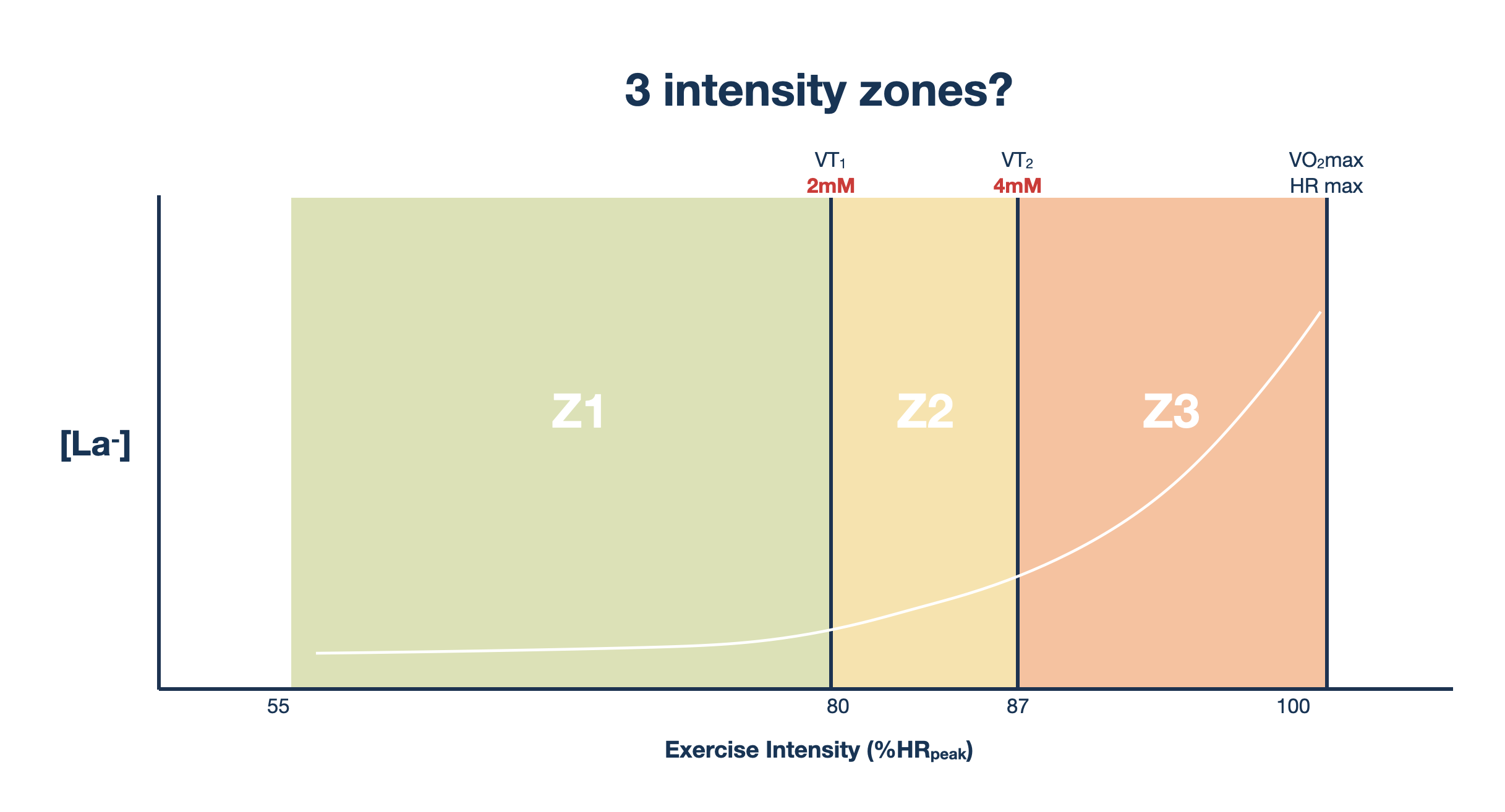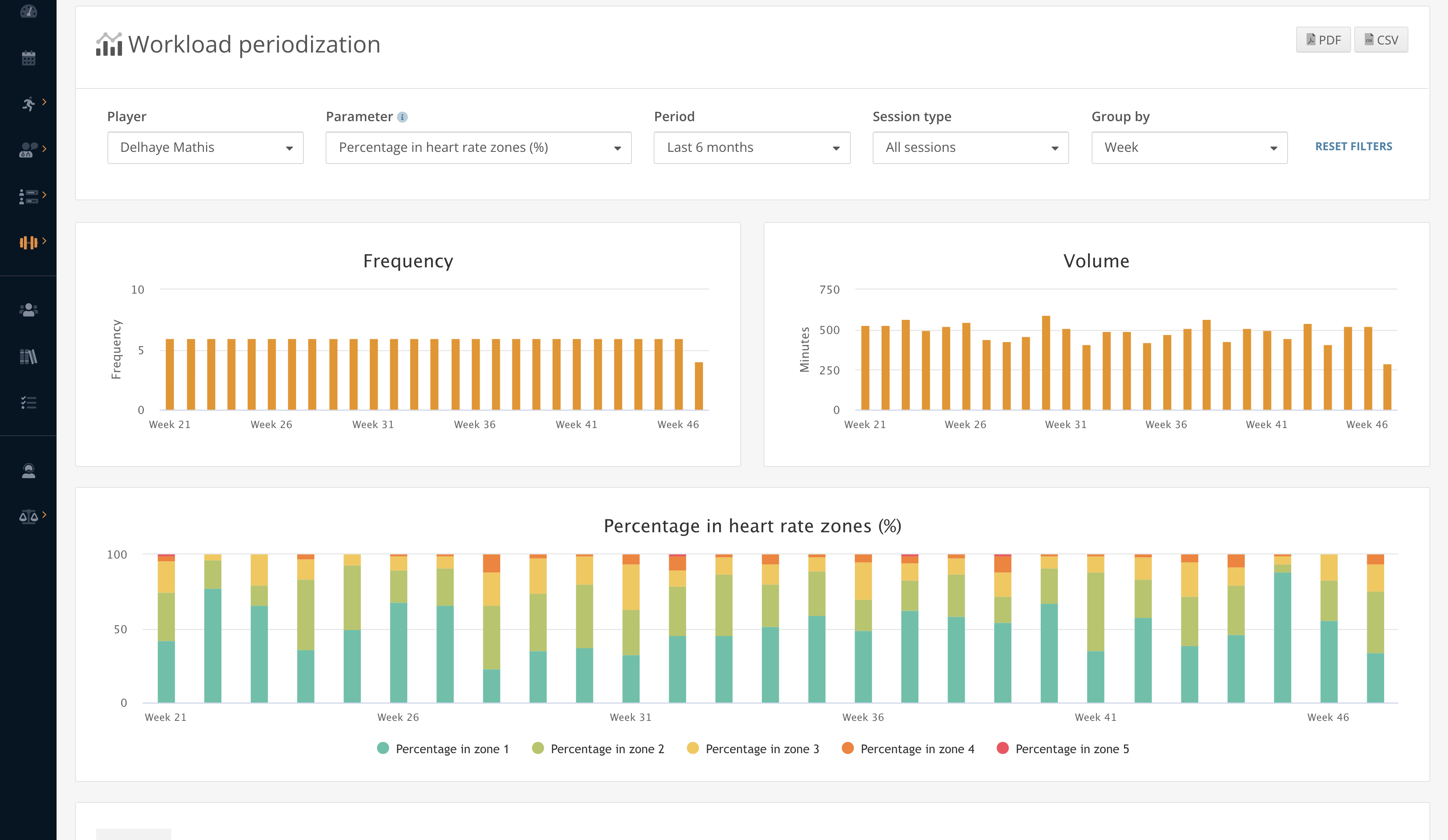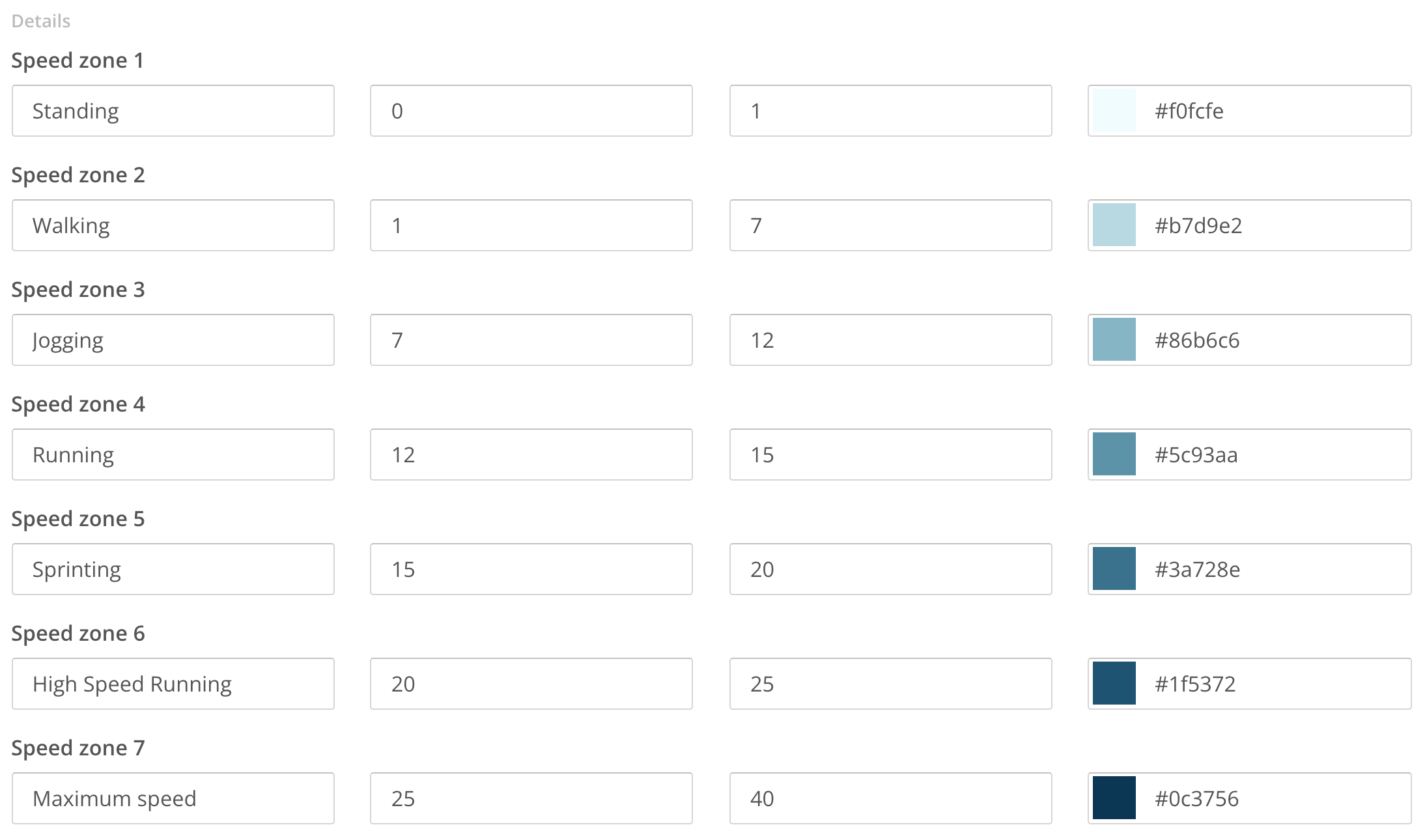Training intensity distribution in elite football: polarised or not?
Every year at the start of pre-season, images of professional football players appear when suffering on a treadmill completing an incremental running test. The aim of the test is to determine physiological parameters related to the aerobic and anaerobic threshold that can be used to define the three main training intensity zones:
- Low intensity: Below aerobic threshold. No increase in blood lactate concentration. No increase in ventilation relative to O2 consumption.
- Moderate intensity: Between aerobic and anaerobic threshold. Minor increase in blood lactate concentration. Minor increase in ventilation relative to O2 consumption.
- High intensity: Above anaerobic threshold. High increase in blood lactate concentration. High increase in ventilation relative to O2 consumption.

Seiler: Training intensity zones: General rules and importance of individual testing
In endurance sports, research showed that elite athletes have a typical training intensity distribution consisting of a high volume of low intensity training (~80% of the training time) and a low volume of high intensity training (~10% of the training time).
Athletes tend to reduce training time in the moderate intensity zone to avoid having too much pain for too little gain. This concept is called ‘polarised training’. For more information, we refer to this great presentation of Stephen Seiler and recommend reading his scientific work on this topic.
What exactly is the training intensity distribution?
This research question was recently examined by a group of researchers and practitioners from the University of Gent and professional football club KAA Gent in Belgium. The study is not yet published online but is a part of the PhD project of Youri Geurkink, which is available on request here.
Data were collected from 20 professional football players that were part of the first team. The pre-season period was chosen as the period of interest because the training content during this period is aimed at developing football-specific fitness in addition to the technical and tactical preparation. During in-season, periodisation of physical training is more dictated by the match schedule and the corresponding need to maintain freshness (see our previous blog post).
At the start of pre-season, all players performed an incremental running test to determine their training intensity zones. Heart rate (HR) and the running speed relating to the aerobic (average: 154.5 ± 8.5 bpm & 10.6 ± 0.5 km.h-1) and anaerobic threshold (average: 178.1 ± 9.2 bpm & 13.7 ± 0.6 km.h-1) were determined for each player. The training load was monitored via heart rate and GPS sensors during the 36-day pre-season period consisting of soccer sessions (n=29), friendly games (n=11), and conditioning sessions (n=10).
The training intensity distribution was quantified using four different methods:
- HR over time (HR-time)
- HR over total distance covered (HR-distance)
- Speed over time (Speed-time)
- Speed over total distance covered (Speed-distance)
The results showed that players spend most of their time in the low intensity zone (76.7% for HR and 87.9% for speed) and only a small amount of their time in the high intensity zone (3.1% for HR and 4.7% for speed).
When analysing the intensity distribution based on distance covered, players have a relative lower percentage for the low intensity zone (66.5% for HR and 65.6% for speed) while a similar (4,8% for HR) or higher percentage for the high intensity zone (16.5% for speed).

These findings show that, like endurance athletes, elite football players are trained via a polarised training approach, maximising time and distance in the low and high intensity zone while minimising time and distance in the moderate intensity zone. These data are in line with another study that examined the training intensity distribution during an in-season period.
Although a polarised training approach was identified in the study, there were clear differences observed in the percentages between the 4 different methods. To date, no consensus exists regarding the best method to use. Each method contains advantages and disadvantages that need to be considered.
For example, when using time as a reference variable, Geurkink and colleagues highlight the presence of unplanned breaks within or between training exercises that highly influence the training intensity distribution. However, from a physiological perspective, it can be important to recognise that these breaks are an important parameter determining the overall training load and corresponding training effects.
In addition, a distinction can be made between external speed-based variables and internal HR-based variables. While HR variables best describe the physiological training stimuli, Geurkink and colleagues emphasise some disadvantages of using HR for monitoring training intensity in high-intensity intermittent sports such as football. Therefore, although it does not provide insights in the internal physiological stimuli, speed-based variables are a useful addition for HR-based variables.
Training intensity distribution in Topsportslab
The training intensity distribution is an important parameter to understand the effect of training load on performance. In the Topsportslab platform, we provide the opportunity to set up your own training zones for each player. Additionally, we provide some useful tools to facilitate the monitoring and analysis of the intensity distribution.

Interested in load monitoring?
Want to see how our platform can help you visualise training intensity distribution?
Care to keep updated?
Subscribe to our newsletter.
You'll get updates about our recent blog posts and platform updates.